The Kawasaki Mule 3010 is a robust and versatile utility vehicle known for its dependability in a variety of work environments. Despite its durability, like any mechanical vehicle, it faces its share of issues over time. Understanding common problems and identifying possible solutions is crucial for maintaining the Mule 3010’s performance and longevity.
Unfortunately though, Kawasaki Mule 3010 problems can range from fuel system complications to drivetrain noises. Addressing these issues promptly can prevent minor problems from becoming major headaches for owners. But what do you need to know in the process?
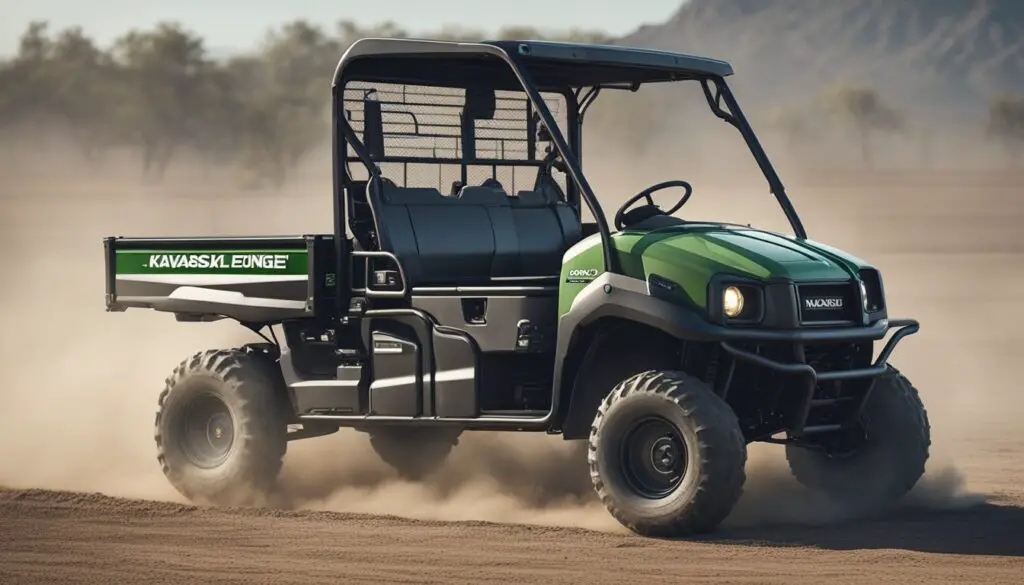
Many owners report that some of the most common challenges with the Mule 3010 include fuel pump problems, which can lead to reduced engine performance and starting difficulties. Moreover, the cooling system and ignition can also present issues, with symptoms like overheating and inconsistent starting. Regular maintenance and timely repairs are key in managing the operation of the Mule 3010, sustaining its utility for both work and recreation effectively.
Key Takeaways
- Regular maintenance can prevent common Mule 3010 problems.
- Fuel, cooling, and ignition systems are critical areas to monitor.
- Timely problem identification and repair extend vehicle longevity.
Kawasaki Mule 3010 Overview
In this section, we take a closer look at the Kawasaki Mule 3010, covering its design and performance specifics, as well as its standing as a dependable utility vehicle for various uses.
Design and Specifications
The Kawasaki Mule 3010 is designed with practicality and versatility in mind, making it a solid choice for a variety of tasks. Developed from 2001 to 2008, the Mule 3010 boasts a 617 cc four-stroke twin-cylinder engine that provides robust power for a utility vehicle of its class. Here are some of the specifications at a glance:
- Engine: 617 cc, 4-stroke, twin-cylinder
- Drive System: Selectable 4WD with dual-mode rear differential
- Transmission: Kawasaki Automatic Power-Drive System (KAPS)
Its design featuring an open-cab chassis and a pickup-truck-like cargo bed makes it highly favored among farmers and workers who demand both functionality and simple operation.
Common Usage and Reliability
You’ll find the Mule 3010 employed frequently in farming and outdoor settings, where its dependability and utility are put to good use. Due to its versatility, it operates well on various terrains, which is essential for tasks such as towing, hauling, and transporting supplies. Regarding reliability, users have often noted the Mule 3010’s safety features and the long-standing trust in Kawasaki’s craftsmanship. While it’s designed to withstand rigorous work environments, regular maintenance is key to ensuring its longevity and optimal performance.
Engine and Performance
Exploring your Kawasaki Mule 3010, you’ll find that engine and performance issues can typically fall under starting and acceleration problems or relate to overheating and lubrication matters. It’s crucial to understand these areas to keep your vehicle running smoothly.
Starting and Acceleration Issues
When initiating the start, you might encounter starting problems which can stem from a range of components. Key areas to check include:
- Ignition Switch: Ensure it’s functioning properly.
- Ignitor and Coils: They should be in good condition and free of damage.
- Spark Plugs: Check for corrosion or wear and replace if necessary.
- Fuel Filters: A clogged fuel filter can restrict the flow, causing issues with acceleration or causing the engine to sputter.
If you experience a loss of power during acceleration, this could signify a restricted fuel system or ignition troubles. Regular inspection and cleaning can prevent debris build-up, thus maintaining proper acceleration.
Overheating and Lubrication
Overheating is a common issue that can lead to serious engine damage if not addressed. For optimal lubrication and cooling, consider the following:
- Coolant Level: Verify that the coolant level reaches the ‘Full Cold’ marker when the engine is cold.
- Radiator: Clean the radiator regularly to prevent clogs and ensure proper heat dissipation.
- Water Pump: A functioning water pump is vital for circulating coolant to control engine temperature.
Regular checks of overheating issues can prevent long-term damage. Watch for signs like excess steam or an elevated temperature gauge, and act promptly to inspect and repair any faulty components.
Fuel System and Carburetion
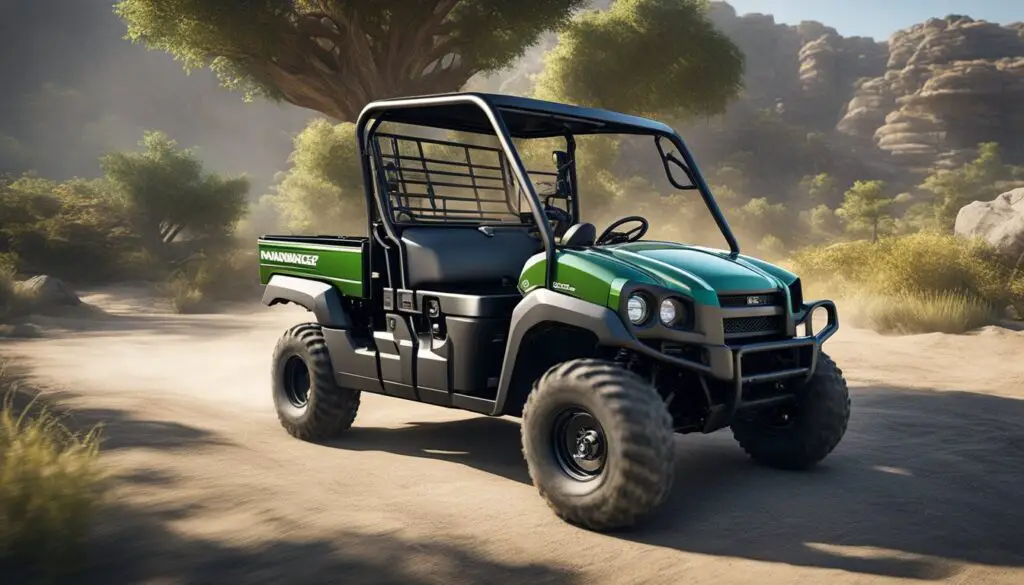
Your Kawasaki Mule 3010 may encounter issues that stem from the fuel system and carburetion, which are vital for smooth operation. Let’s identify common concerns with the fuel pump and filter, as well as potential carburetor problems.
Fuel Pump and Filter Concerns
Issues with the fuel pump are commonly reported for the Mule 3010. If you notice your Mule running for a while before starving for fuel and cutting out, this could be a prime indicator that the fuel pump is not consistently supplying fuel to the carburetor. Replacing the fuel pump may resolve this issue. However, it’s also critical to check and replace the fuel filters as clogs here could mimic fuel pump problems. Regular maintenance includes:
- Inspecting fuel lines for any signs of deterioration or leakage.
- Ensuring the fuel tank is clean to prevent debris from clogging the filters.
Carburetor and EFI Issues
Your carburetor could be presenting issues too. Common signs include needing the choke to get to full power or hard starting. If cleaning the carburetor doesn’t resolve your problem, it might need replacing. Here are specific parts to check:
- Jets: Ensure they are clean as clogged jets can disrupt fuel flow.
- Carburetor settings: Check if adjustments are necessary for proper air and fuel mixture.
Remember, if your Mule 3010 is EFI (Electronic Fuel Injection) equipped, troubleshooting will differ as EFI systems have sensors and electronic controls instead of a carburetor.
Electrical System and Ignition
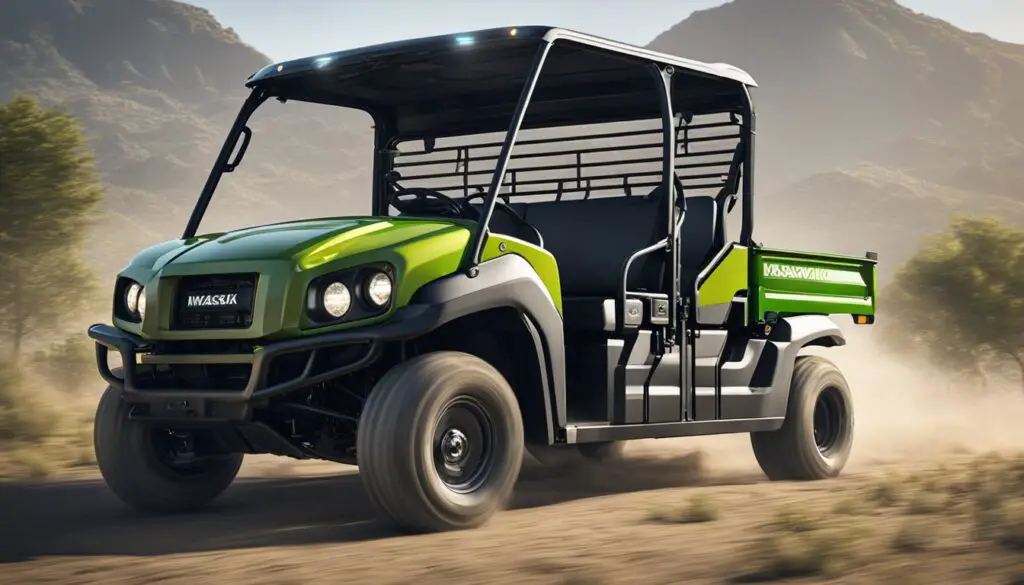
When dealing with the Kawasaki Mule 3010, it is essential to understand the electrical and ignition systems, as they are pivotal for starting your Mule and ensuring it runs smoothly. Let’s take a closer look at the key components that you might need to troubleshoot.
Battery and Charging System
Your battery is the heart of the electrical system, supplying the initial spark to start the engine. If you’re facing a dead battery, it could be due to a faulty charging system which may not be replenishing the battery’s power. Regularly check the voltage to ensure the battery maintains adequate charge. Remember, battery issues can often arise from corroded terminals or poor connections, so keeping terminals clean and secure is vital.
Wiring and Electrical Connections
Inspect your Mule’s wiring and connections for signs of wear, corrosion, or damage. A fault in the wires can lead to various electrical issues. Pay special attention to the ground connections as a poor ground can result in intermittent electrical problems. Ensure all wiring is properly insulated and secured away from hot or moving parts to prevent wear.
Ignition System Breakdown
The ignition system’s main purpose is to generate a spark. A failing spark can be due to a problematic ignition switch, a malfunctioning coil, or issues with the fuel pump relay. It’s key to note that the Mule 3010 uses a specific ignition system that differs from other models, with a single pulsing coil system that’s integral for the proper function of the ignitor.
Headlights and Other Electrical Components
For headlight problems or issues with other electrical components, first check the fuse related to the non-working component. If the fuse is intact, the problem could lie within the switch or the bulb itself. Always use the correct bulb type and wattage to prevent damage to the electrical system. Regular checks and maintenance can prevent and quickly resolve these common electrical hurdles.
Transmission and Drivetrain
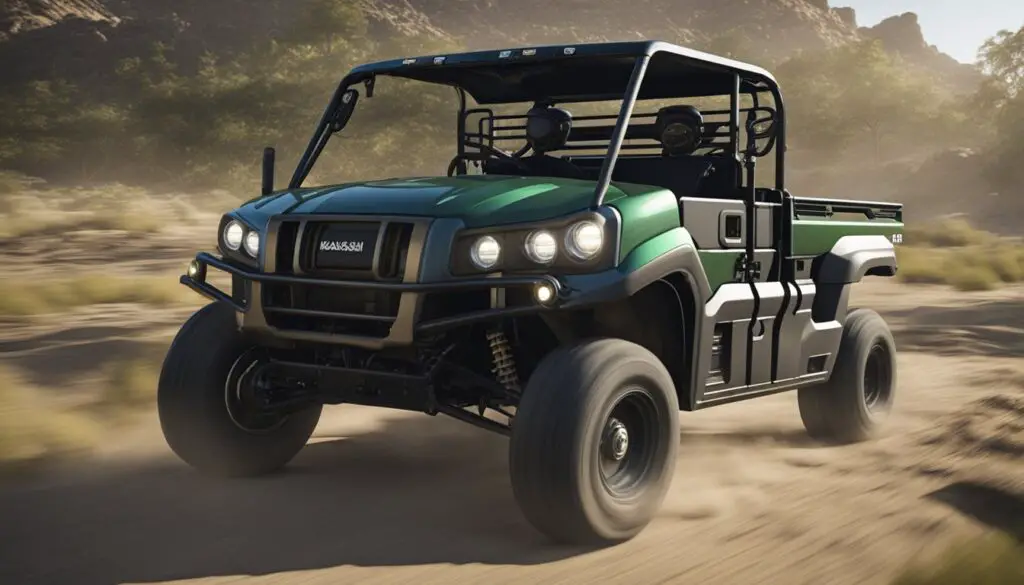
In your Kawasaki Mule 3010, you might encounter some transmission and drivetrain issues that can affect your ride’s performance. The following subsections will guide you through common concerns such as drivetrain noise and transmission oil or clutch problems.
Drivetrain Noise and Vibration
You may notice drivetrain noise—a loud or abnormal sound coming from your vehicle when it’s running. This noise can be due to wear and tear over time. To address this, inspect the drivetrain components for signs of damage or excessive wear. Components such as U-Joints and carrier bearings are often culprits of such noises and should be inspected regularly.
Transmission Oil and Clutch Problems
Proper transmission oil maintenance is crucial for smooth gear shifts. If you’re experiencing difficulties shifting gears or unexpected gear engagement, check your transmission oil level first. Low oil levels can lead to gear shifting issues. Additionally, worn-out clutch plates or misadjusted linkage may necessitate a clutch inspection. Here’s what you should keep in mind:
- Transmission Oil: Ensure it’s at the correct level with the right specification.
- Clutch Inspection: Look for worn clutch plates and improper linkage adjustments.
Remember to use genuine parts for replacements to maintain the integrity of your Mule 3010’s performance. Regular maintenance can prevent most issues before they become significant problems.
Wheels, Tires, and Suspension
Your Kawasaki Mule 3010’s performance and comfort are significantly influenced by the condition of its wheels, tires, and suspension. Proper maintenance ensures longevity and a smoother ride.
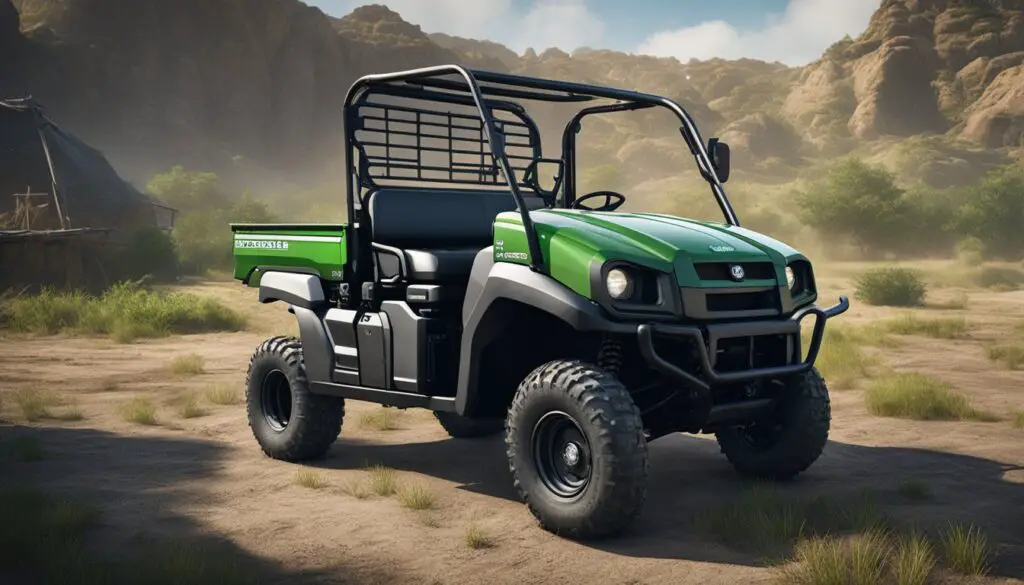
Suspension Troubles
When you notice a rough ride or strange noises, it might be time to inspect your suspension system. The front suspension usually consists of MacPherson struts which could potentially lead to issues if the joints or struts themselves become worn or damaged.
Tire Wear and Pressure
Regularly checking the tire pressure and wear patterns can prevent premature tire replacement and ensure safe operation. Your Mule 3010 uses tubeless tires, and their condition is crucial for optimal performance.
- For tire pressure: Always maintain the pressure recommended in the owner’s manual.
- For tire wear: Look for uneven wear patterns which could indicate suspension or alignment issues.
Body, Frame, and Exterior Issues

When considering the upkeep of your Kawasaki Mule 3010, the integrity of the body, frame, and exterior components is as crucial as the mechanical aspects. These elements are your machine’s first line of defense against the elements and the rigors of off-road use.
Rust and Corrosion
You may find rust and corrosion on the frame and body panels of your Mule 3010, especially if you often drive in wet or salty environments. These issues can not only mar the appearance of your machine but also weaken its structural integrity. Here’s what you should look for:
- Frame: Inspect the underside of the frame for signs of rust, paying close attention to weld points and corners where moisture can accumulate.
- Body Panels: Check for bubbling paint or rust on steel components, which can indicate advancing corrosion underneath.
Components Wear and Design Flaws
With regular use, certain exterior components of your Mule 3010 may show wear or suffer from design flaws. Keep an eye on these areas:
- Bushings and Joints: Check for excessive play or degradation in the suspension bushings and joint areas, which can affect ride quality and handling.
- Throttle Pedal: Some users report the throttle pedal can become sticky over time due to dust and mud build-up or wear, which is a concern for controlling your speed smoothly.
Examine these areas during your regular maintenance routine to catch potential issues early, ensuring your Kawasaki Mule 3010 remains robust and reliable for your work or leisure activities.
Maintenance and Repair
Regular maintenance and timely repair are crucial for the longevity of your Kawasaki Mule 3010. This section will guide you through cleaning and preventative care, troubleshooting common issues, and understanding the technical specifications for complex repairs.
Cleaning and Preventative Maintenance
To keep your Kawasaki Mule 3010 in top condition, it’s important to clean the radiator and check coolant levels regularly. Dirt and debris can obstruct the cooling fins, leading to overheating. Follow these steps to ensure effective cooling:
- Inspect the Radiator: Look for any obstructions and clear out debris using a soft brush or compressed air.
- Check Coolant Levels: Make sure the coolant is filled to the manufacturer’s recommended level, and refill if necessary.
Troubleshooting Common Problems
When you encounter issues with your 3010 Mule, effective troubleshooting is key before heading towards repairs. Here’s how to approach some frequent troubles:
- Starting Issues: Check the battery connections, and ensure your fuel pump is functioning properly.
- Rough Idling or Accelerator Problems: These may be signs of carburetor complications, warranting a closer look or a clean-up.
- Drivetrain Noise: Listen for unusual sounds which might indicate a need for drivetrain inspection or lubrication.
Technical Specifications and Repairs
Sometimes, repairs go beyond the scope of simple troubleshooting. Here are key specs and repair insights:
- Engine Rebuild: In cases of significant engine failure, review the service manual for engine rebuild specifications.
- Detailed Repairs: Advanced issues such as transmission sticking or faulty brakes may require assistance from a professional mechanic who can diagnose and execute the necessary repairs according to technical specifications.
Owner Experiences and Solutions
Kawasaki Mule 3010 owners often discuss the vehicle’s reliability and ride quality alongside their problem-solving experiences. Knowing how to handle common issues can greatly enhance your ownership experience.
Handling and Overall Experience
Experiencing common problems like engine sputtering or fuel pump problems might be frustrating, but many users have found effective solutions that restore the Mule’s performance. Your Mule might be tough, but it sometimes requires careful attention to detail, especially with starting issues that could stem from a bad relay or fouled spark plugs.
- Engine Sputtering: This is often caused by a clogged carburetor or dirty fuel system. Regular maintenance and using clean fuel are key. If your engine is sputtering, check your fuel quality and replace the air filter if it’s dirty to ensure a proper air-fuel mixture.
- Fuel Pump Problems: When your fuel pump isn’t working correctly, you might notice a drop in power or difficulty starting the engine. To fix this, ensure the fuel lines are clean and the pump is receiving the correct voltage.
- Starting Issues: If your Mule refuses to start, it could be due to a bad relay or a drained battery. Triple-check your battery connections and consider replacing the relay if these problems persist.
Remember, staying on top of maintenance can prevent many issues and ensure you enjoy the ride quality and reliability that Kawasaki Mules are known for. Regular checks of the coolant system, cleaning the carburetor, and inspecting brakes can keep you riding smoothly and safely.
Concluding Remarks
Your Kawasaki Mule 3010 has shown itself to be a dependable workhorse when tackling various tasks. Its friendly demeanor in the form of user-friendly controls and comfort has made it popular for both work and play. However, like any vehicle, the Mule is not immune to wear and tear, leading to potential issues. Below is a quick summary of common problems and considerations:
- Carburetor Issues: Regular maintenance is key to keeping it operational.
- Overheating: Always monitor coolant levels and system health.
- Fuel Pump Complications: Symptoms may include power loss; keep an eye out.
- Transmission Concerns: Should you feel any stiffness, inspect it promptly.
- Starting Difficulties: A well-maintained battery and starter system ensure reliability.
- Brake Problems: For your safety, ensure the brake system is routinely checked.
Regular care greatly reduces the chances of encountering these troubles, but if they do arise, addressing them swiftly will help maintain your Mule’s steadfast service. Your machine’s longevity is a testament to your attention and care. Remember, proper maintenance not only extends the life of your Kawasaki Mule but also enhances its performance, allowing you to enjoy a smooth and efficient ride every time.
Frequently Asked Questions
Owners of the Kawasaki Mule 3010 often encounter a range of common issues. Here, you’ll find answers to address some of the most typical problems you might face with your vehicle.
What are the typical symptoms of electrical issues in a Kawasaki Mule 3010?
You may notice symptoms like a failure to start, dimming lights, or erratic behavior of your vehicle’s electrical systems. These can signal an underlying electrical problem that might be due to a dead battery, blown fuses, or faulty alternator.
How does one troubleshoot starting problems in a Kawasaki Mule 3010?
Troubleshooting starting problems should begin with checking the battery’s charge and connections. If these are in good condition, move on to inspecting the starter motor and solenoid for any malfunctions.
What are the common causes of overheating in Kawasaki Mule 3010 models?
Common causes include a clogged radiator, low coolant levels, or a malfunctioning water pump. Routine inspections and maintenance are key to preventing overheating.
How can transmission issues be identified in a Kawasaki Mule 3010?
If your Mule 3010 is difficult to shift or you hear abnormal noises from the drivetrain, this might indicate a transmission problem. Check for dirty or low transmission fluid which can exacerbate these issues.
Are there any known fuel system problems in the Kawasaki Mule 3010 series?
Fuel system issues can manifest as the engine sputtering, losing power, or failing to start. This can be due to a clogged fuel filter, issues with the fuel pump, or contaminated fuel.
What maintenance tips can help prevent common Kawasaki Mule 3010 issues?
Regular maintenance such as changing oils, checking fluid levels, inspecting brakes, and cleaning or replacing filters can prevent many common issues. Also, always ensure that the cooling system is functioning properly to avert overheating.
